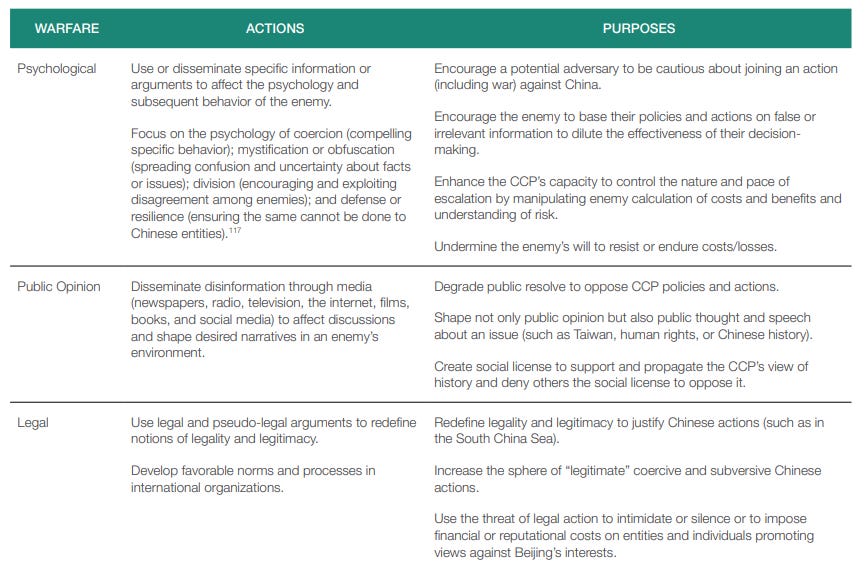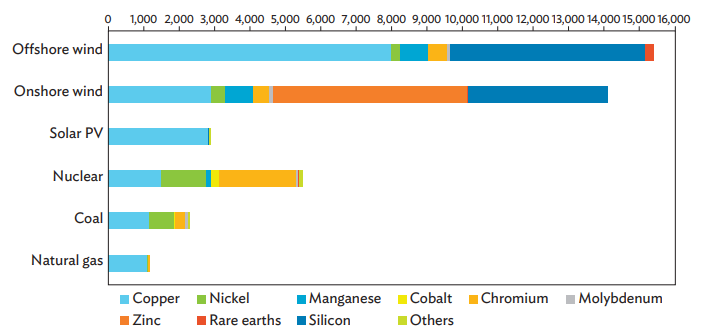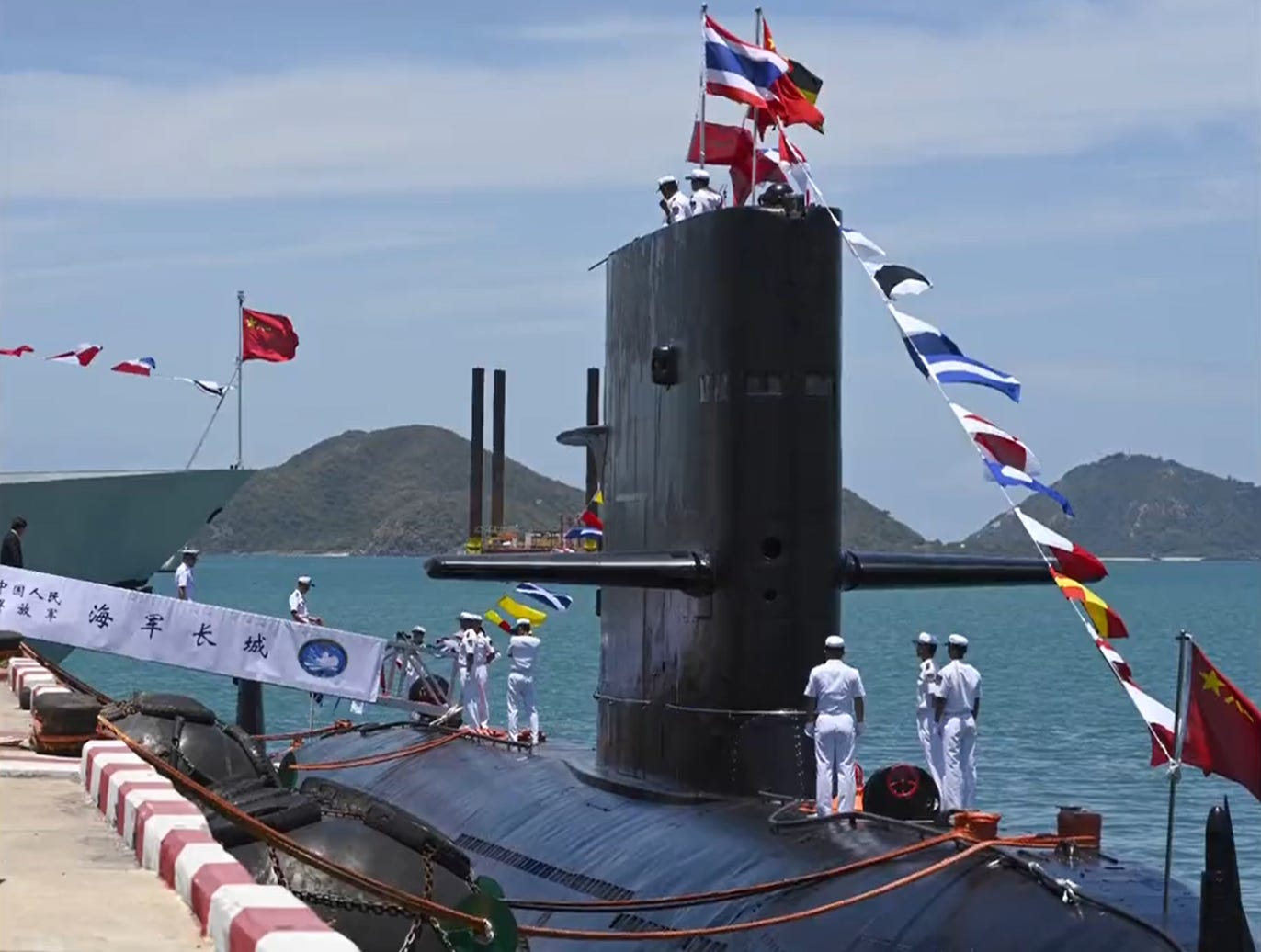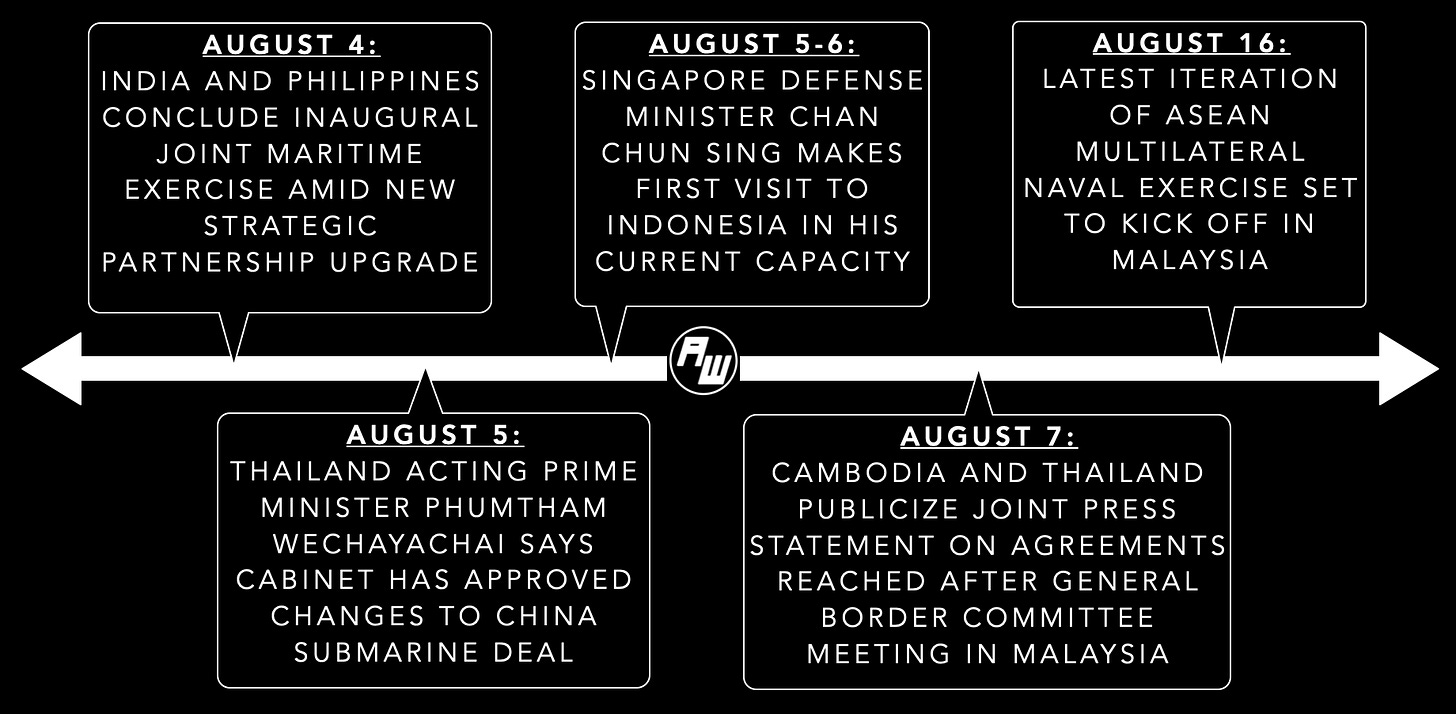China Sub, Jet Deals Put Focus on Thailand Military Strategy
Plus new rocket diplomacy call; coming critical minerals deal; quiet drone policy adjustment; big digital deal inroads; China port plans and much, much more.
Greetings to new readers and welcome all to the latest edition of the weekly ASEAN Wonk BulletBrief! If you haven’t already, you can upgrade to a paid subscription for $5 a month/$50 a year below to receive full posts by inserting your email address and then selecting an annual or monthly option. You can visit this page for more on pricing for institutions, groups as well as discounts. For current paid subscribers, please make sure you’re hitting the “view entire message” prompt if it comes up at the end of a post to see the full version.
For this iteration of ASEAN Wonk BulletBrief, we are looking at:
Assessing the geopolitical and geoeconomic significance of a recent cabinet approval and wider regional implications tied to a China submarine purchase as well as fighter jets;
Mapping of regional developments, including rocket diplomacy call and new independence marker;
Charting evolving geopolitical, geoeconomic and security trends such as new tech strategic partnership; critical mineral plans and China port plans;
Tracking and analysis of industry developments and quantitative indicators including quiet drone policy; big import ban and coming boundary talks.
And much more! ICYMI, check out our ASEAN Wonk review of a new book which forecasts the contours of a “coming new era” in maritime security.
This Week’s WonkCount: 2,126 words (~10 minutes)
Rocket Diplomacy Call; Independence Marker & Much More
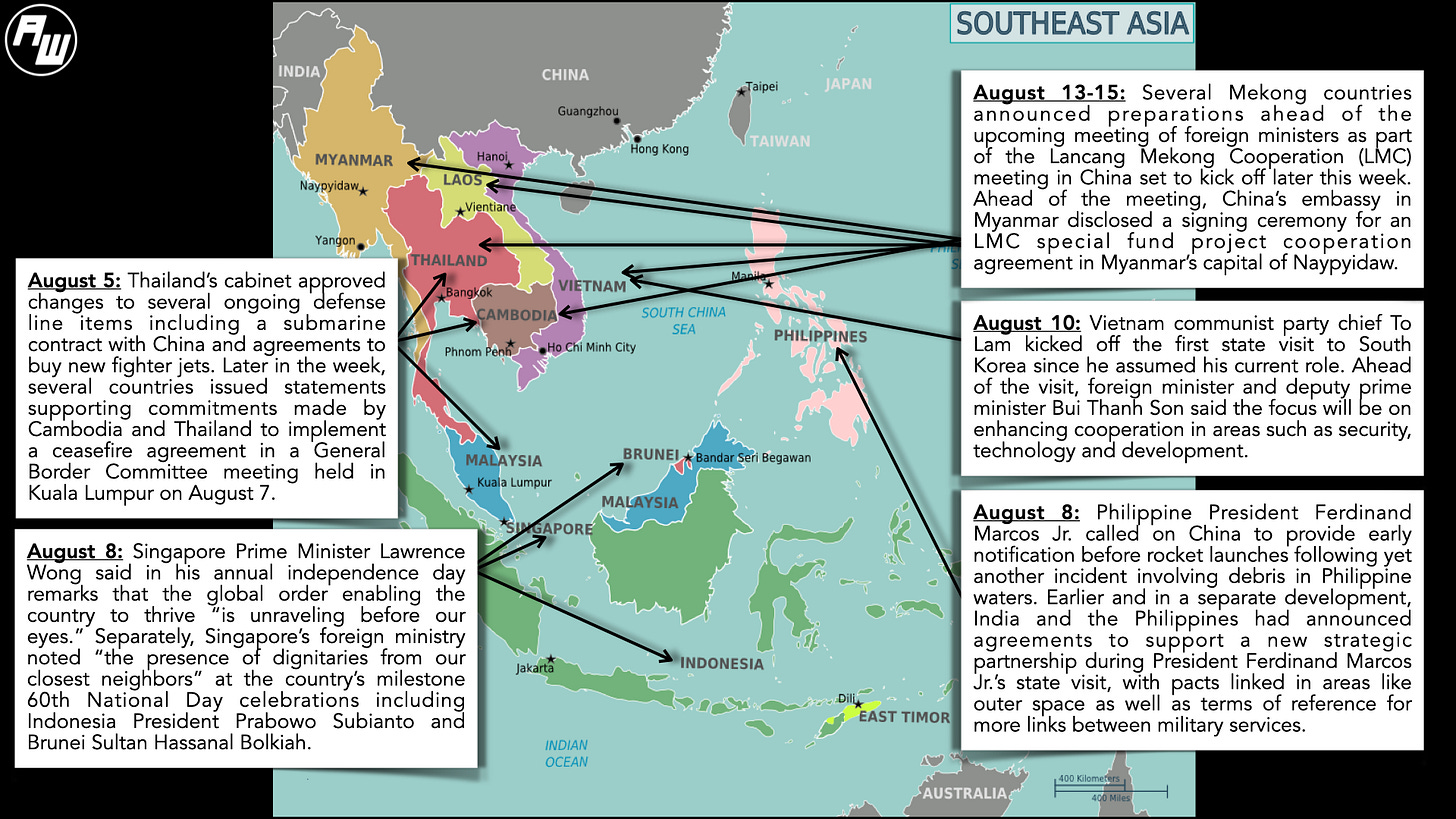
Nuclear Futures; Defense Outlook & Critical Mineral Pathways
“China’s vision of success in Asia is not exclusively or even necessarily reliant on surpassing raw US power and influence…the key to success is gradually locking the US out of the region," notes a new publication released by the Hudson Institute on the implications of Chinese nuclear weapons modernization and implications for the region. The publication includes case studies of the Philippines, Japan and South Korea (link).
Report Table Visualizing The Actions and Purposes of the Three Warfares
“Politicians, in particular, should guard against optimism bias," argues a new report published by the Australian Strategic Policy Institute on Australia-Indonesia defense relations. The report includes recommendations for how to enhance the recently signed Defense Cooperation Agreement between the two sides, including a deepening focus on hybrid threats and challenges (link).
“In absence of an international organization with a global scope dedicated to critical minerals, what has emerged is a fractured landscape,” observes a new publication released by the Asian Development Bank regarding proceedings from a prior conference on critical minerals and the clean energy transition. The publication includes sections on country-based and regional best practices as well as a set of community resources (link).
Minerals Utilized in Clean Energy Technologies Vs. Other Power Generation Sources (kg/MW)
China Sub, Jet Deals Put Focus on Thailand Military Strategy
What’s Behind It
Thai officials publicized approvals on key defense items in Southeast Asia’s second-largest economy, including controversial submarines from China amid anxieties over major power engagement and an ongoing border row1. The details on these line items came at a sensitive time given the ongoing Thai-Cambodia tensions and recent government changes, and one defense official told ASEAN Wonk in Bangkok this past week that the disclosure of long-delayed next steps required adjustment even in aspects such as managing public sentiment2. The details were disclosed as anxieties persist behind public statements of support that rolled for new outcomes in Thailand-Cambodia talks in Malaysia, which is also set to play host for the next ASEAN Multilateral Naval Exercise or AMNEX scheduled for the third week of August — just the third iteration of its kind to be held so far in ASEAN’s history as a regional grouping3.
Select Recent Security Developments in Southeast Asia
The newly-publicized disclosures did not escape widespread scrutiny and lingering questions, in spite of multiple challenges directly cited by officials. While Thailand’s individual services are among the more frequent disclosers of periodic outlooks on their future ambitions and priorities in Southeast Asia —including a Thai navy white paper back in 2023 — public focus has often been dominated by more specific concerns around individual capabilities, costs and inter-service dynamics amid government changes and coups4. Indeed, one critique directly refuted claims of sensitivities by Thailand’s acting premier and ex-defense minister that the armed forces were currently in active operations, noting that a war footing should not be grounds “to hand a black cheque to the armed forces” at a time when “the military keeps asking for more weapons while the government asks fewer questions.”5 These questions included transparency over contractual changes made to the China submarine deal as well as the prospect of other foreign governments pressuring the government to make amendments to future procurement contracts in a world of intensified major power competition6.
Why It Matters
The state of play also points to future datapoints to watch across key areas in defense policy as well as regional and global implications (see originally generated ASEAN Wonk table below on notable areas to monitor and additional specifics. Paying subscribers can read on for more on what to expect and future implications in the rest of the “Why It Matters” and “Where It’s Headed” sections, along with paid-only sections of the newsletter as usual).





